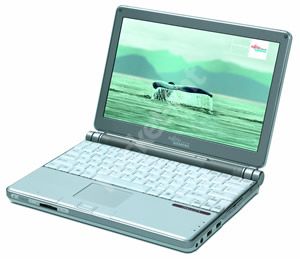We’re great fans of the Sony VAIO aesthetic - notebooks that look as good as they run. So it was something of a surprise when the Fujitsu Siemens LifeBook P7010 arrived as it screams Sony. So much so, that it feels as though the Fujitsu Siemens design team has sat down with a Sony TR2MP and tried to replicate it.
Our quick take
If you have thought, as we had, that if you were to opt for an ultraportable then it would have to be a Sony, then it’s time to think again. The Fujitsu Siemens LifeBook P7010 looks as good as the competition, works just as well but costs less - how’s that for a winning formula?

Fujitsu Siemens Lifebook P7010 - 4.5 / 5
| FOR | AGAINST |
|---|---|
|
|
For the most part they have. The LifeBook P7010 incorporates a high-definition 10.5-inch TFT panel that uses the same technology as Sony laptops. In the case of Fujitsu Siemens, such screens are referred to as Crystal View screens rather than X-black. However, the principle is the same, with an improved contrast ratio. Simply placing your older laptop next to it highlights how much of an improvement such a screen is.
Having such a small screen means that the weight if the notebook can be kept to a minimum, and at 1.5kg, the LifeBook can easily be hidden away in your briefcase. The squat design is also a bonus, as it means you won’t need a hulking laptop carry case to cart it about.
The screen is in the widescreen format the same as movies on DVD or the cinema, as known as16:9 aspect ratio, so you can watch movies without having to watch a cropped or squat picture. What this also means for the notebook is that you can fit a good-sized keyboard that is compact but comfortable to use. We found that the keys were only marginally smaller than those on our standard notebook.
In terms of power and performance, the P7010 takes advantage of Intel’s Ultra-Low Voltage technology in the form of the Pentium M 733 chip, which runs at 1.1GHz. Supported by 512MB DDR SDRAM and a Fujitsu 80GB hard drive. There are faster specifications to be had in such a compact size but there is a trade-off - usually in battery life.
Ultraportable notebooks are renowned for offering little in the way of battery life, if you place a heavy duty processor on top of this you’ll end up with a reduced battery life. We’d prefer to work steady for longer. The LifeBook P7010 offers just less than four hours from a single charge, which is long enough for a good mornings work without needing to power down.
Ultraportable laptops have low thermal thresholds and anything that can be done to fit neatly into this thermal envelope is an advantage. Over prolonged use, we found that there was very little heat build up from this laptop, with only the right-hand side growing slightly warm to the touch.
When it comes to keeping connected, the standard array of expansion is in place - with 802.11g for connecting to hotspots and an Ethernet ports for connecting to a network. We were disappointed that the optical drive can only copy CD-Rs and not DVD-Rs, but having an optical drive in such a light machine is a bonus in itself, so we didn’t complain too loudly.
To recap
An ultraportable notebook to threaten Sony’s crown. It offers everything you need except for game-playing ability
